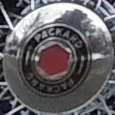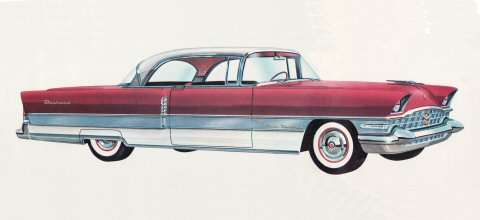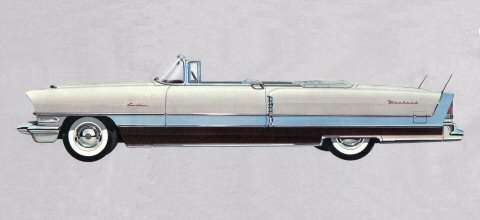|
Re: 1954 Convertible Coupe Engine Overhaul Project
|
||||
|---|---|---|---|---|
|
Home away from home
|
Presuming the block was hot-tanked and thoroughly flushed, was the brass coolant distribution tube removed first, inspected for damage, then reinstalled afterward?
Posted on: 2023/3/8 17:04
|
|||
|
All generalities are false.
Once I thought I was wrong but I was mistaken. Don Pierson Packard / IMPERIAL page CA DMV Licensed Vehicle VIN Verification 1951 Henney-Packard 3-Door Long Wheelbase Air Force Ambulance The 1951 Henney-Packard is For Sale! 1954 Packard Patrician 1954 Packard Patrician Parts Car 1956 Clipper Custom Sedan |
||||
|
||||
|
Re: 1954 Convertible Coupe Engine Overhaul Project
|
||||
|---|---|---|---|---|
|
Home away from home
|
I'd run it through a few more heat/cool cycles and retorque the head again. If you are still getting leakage at the studs then I buy a package of those stopleak tablets they used for some GM engines and toss them in.
As far as the temperature goes, of course you must have your distribution tube. Beyond that, recheck your timing as retarded timing makes a lot of heat on those engines. What do you actually know about the radiator you are using? How close is it mounted to the fan? Do you have the two heater outlets "shorthosed" together? That causes a lot of coolant to bypass the radiator. Put a clamp in the middle. Also, this is a high friction engine and on break in it will make a lot of heat. I suggest getting a real thermometer and sticking it in the radiator neck to see what you are really getting.
Posted on: 2023/3/8 17:54
|
|||
|
||||
|
Re: 1954 Convertible Coupe Engine Overhaul Project
|
||||
|---|---|---|---|---|
|
Quite a regular
|
Thanks for your reply Don. I cannot answer your question regarding condition of the diary tube, but I know that it is installed in the block as I asked what it was for during water pump installation.
Mark
Posted on: 2023/3/8 22:28
|
|||
|
||||
|
Re: 1954 Convertible Coupe Engine Overhaul Project
|
||||
|---|---|---|---|---|
|
Quite a regular
|
Thank you for your reply, Ross!
The brass disty tube is in place, but I did not see its condition. We did just run a hose between the two heater ports (water pump and head). Will clamp it off in the middle. The radiator is probably smaller than the newly cored radiator but about as thick and has an electric fan attached to it that we are running off a 12V battery. We considered that might be a contributor to the heat, but got concerned when we were seeing 210+ with the digital thermometer. We’ll try a couple more cycles with retorquing, the thermometer in the neck of the radiator and the GM stop leak pellets. Thanks again!
Posted on: 2023/3/8 22:41
|
|||
|
||||
|
Re: 1954 Convertible Coupe Engine Overhaul Project
|
||||
|---|---|---|---|---|
|
Home away from home

|
You might want to consider putting the thermostat back in place. Running without it can cause the coolant to flow through the radiator too quickly to cool sufficiently and lead to a hot running condition. The thermostat restricts the flow, enabling the coolant to spend more time in the radiator to cool off before being drawn back into the block.
Posted on: 2023/3/9 0:05
|
|||
|
Don Shields
1933 Eight Model 1002 Seven Passenger Sedan 1954 Convertible |
||||
|
||||
|
Re: 1954 Convertible Coupe Engine Overhaul Project
|
||||
|---|---|---|---|---|
|
Home away from home

|
I agree with all of the above.
As an additional note, when we started up the newly rebuilt engine on my dad's '38 for the first time, I noted that there was some "bubbling" around a few of the head studs after the initial warm up. The head bolts were all new, all sealed, everything torqued to spec. It did not look like coolant. I believe it was residual oil from machining that may have been getting burned off. Regardless, I never saw it again after that first run and the engine has been through many heat/cool down cycles, with the head retorqued. I'm sure yours will get worked out and everything will be fine. It'll be nice to see your car back on the road. -Kevin
Posted on: 2023/3/9 1:22
|
|||
|
||||
|
Re: 1954 Convertible Coupe Engine Overhaul Project
|
||||
|---|---|---|---|---|
|
Home away from home
|
Like Don said, leaving the thermostat out can actually make the engine run hotter, I believe to be because the coolant as too much momentum to diffuse throughout the radiator properly. Eventually I plan to run a fluid simulation to test my theory on this.
At least once, reinstalling the thermostat with no other changes, cured a heating problem. Since you have such precise equipment, it would be interesting to compare the two heating curves with the only difference being the thermostat.
Posted on: 2023/3/9 5:12
|
|||
|
1955 400 | Registry | Project Blog
1955 Clipper Deluxe | Registry | Project Blog 1955 Clipper Super Panama | Registry Email (Parts/service inquiries only, please. Post all questions on the forum.) service@ultramatic.info |
||||
|
||||








